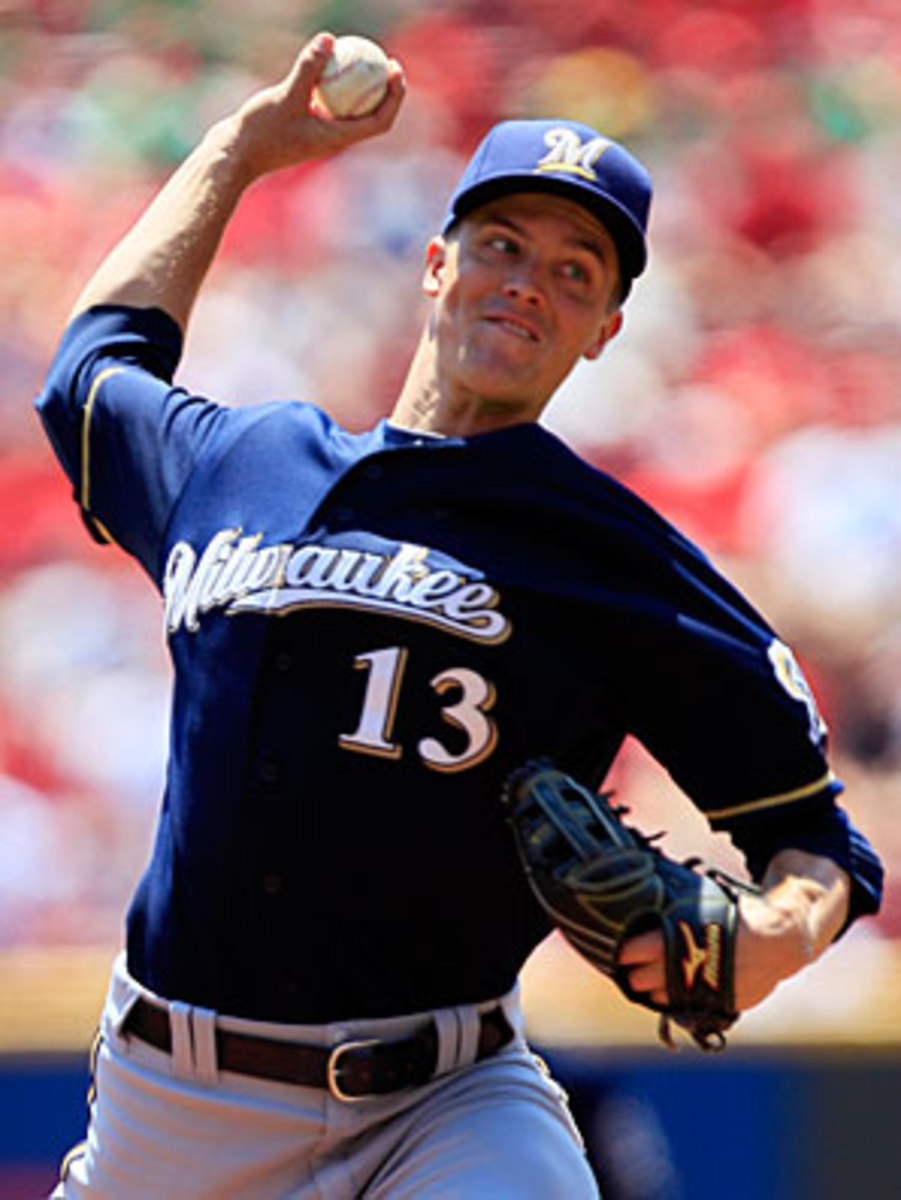Three possible trade acquisitions who could push teams over the top
It's important to keep some perspective on the impact of these deals. MLB isn't the NBA or NFL, where one player can have a disproportionate impact on the outcome of a game or a season. The Colts lost their quarterback and went from a Super Bowl contender to the first pick in the draft. The Cavaliers lost a single free agent and slipped from title contender to afterthought. In baseball, you can't get your best player extra at-bats or ensure that the ball will be hit to your best fielder with the game on the line. You can only use your best pitchers so often, and even the one part of the game where teams can map usage to situations -- relief pitching -- finds that player impact is limited by the number of innings relievers throw.
When sabermetricians looked to evaluate how much value a single player could have, they found it was generally less than expected. In modern baseball, the best players in a given league tend to be worth about eight to nine wins a year, with some exceptions, and about 18 players a year -- less than one per team -- are worth six wins a year. Here's the breakdown for 2001-2011, using Baseball-Reference's Wins Above Replacement metric:
These numbers are important because they set a reasonable upper limit on how much you can improve your team with a single midseason trade. A six-win player projects to be worth two wins over the final two months of the season, so if you're adding a star and using him to cover for replacement-level performance, you can expect to be two wins better -- and that's a pretty extreme scenario. It's actually worse than it looks here, because players having better than six-win seasons rarely are traded during their big year. The only player among the 88 7.0-win-and-up seasons to play for more than one team was Mark Teixeira, who went from the Braves to the Angels at the deadline in 2008.
JAFFE: Six deadline deals that pushed teams to October
Now, players aren't stat-generating robots, so what we're dealing with here is projection and expectation. The natural variance of player performance means that sometimes you'll make a trade that is supposed to make you two wins better -- like the Dodgers with Ramirez -- and the player you acquire has a big two months and you get more than you expected. In 1998, the Astros acquired Randy Johnson to anchor their starting rotation, and got a ridiculous 11 starts of 1.28 ERA performance. It can go the other way, too. In 2009, the Yankees traded for Lance Berkman to bolster their lineup, only to get one homer in 123 plate appearances as Berkman couldn't adjust to the DH role.
The Tigers and the Dodgers have done well to make themselves two wins better in-season. What other players are out there who could have the same impact on a new team, should they be traded?
Zack Greinke, Brewers. Greinke is responsible for one of those 10-win seasons, winning a Cy Young Award for his amazing 2009 breakout year with the Royals. Now, two months from free agency, he finds himself on the trading block for a free-falling Brewers team. Greinke's excellent strikeout (24 percent of batters faced) and walk (4.7 percent) rates are better indicators of his performance than his ERA (3.44), which has been hurt by the shaky Brewers defense. Replacing a fifth starter with Greinke could well save a team 20 runs over the 11 starts remaining. With Cole Hamels off the market and Felix Hernandez never on it, Greinke is the one impact starting pitcher available.
Chase Headley, Padres. Not nearly as famous as Greinke, Headley has labored in obscurity in San Diego during a down period for Padres baseball. His offensive stats are tamped down by Petco Park, but when you adjust for the environment, you find that he hits 20 percent better than the league the past two years. Away from Petco this year, Headley is batting .279/.378/.488, making him a fantastic No. 2 hitter for any contender. He's also a very good defensive third baseman and an excellent percentage basestealer (54 steals at a 79 percent clip in his career). Headley brings a high OBP (.368 in 2011-12) at a position that many teams have had trouble filling, and given the wretched situations at the hot corner for some contenders -- like the A's -- Headley could provide that critical two-win boost.
Josh Johnson, Marlins. In 2011, Johnson was on his way to a lot of awards (1.64 ERA in nine starts) when his right shoulder acted up, eventually cutting his season short at 60 innings pitched. He's made every start this year, at a somewhat lower level of performance overall, but with enough highlights -- like Monday's six one-hit innings against the Braves -- to make you think the No. 1 starter of the spring of 2011 is still in there. In nine starts last year, Johnson was worth nearly three wins. A team acquiring him may not get that high a level of performance, but two wins over two months wouldn't be an outsized expectation.





